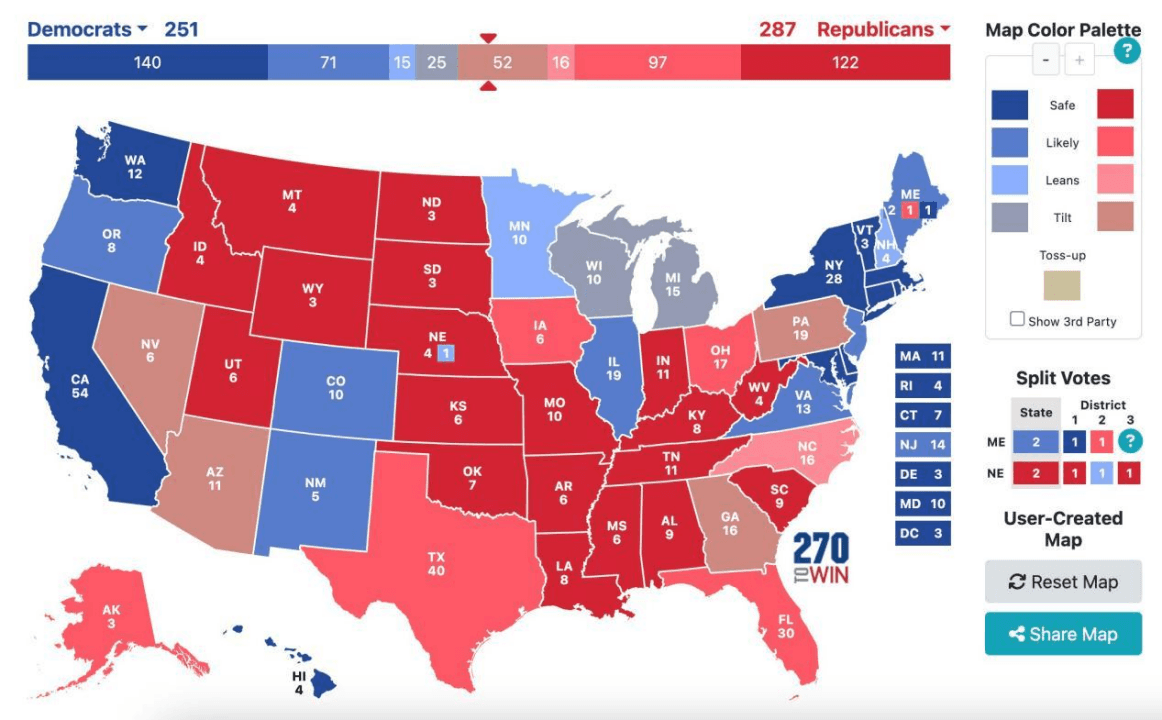The 2024 Election Battleground: Swing States, Polling Adjustments, and the Stakes for Trump and Harris
Aug 10, 2024
Bill W. - In a tense electoral landscape, the battle for swing states and shifting poll strategies will define the fates of Harris and Trump in 2024, with narrow paths to victory in the Rust Belt and Sun Belt states.

Based on the electoral system of the United States election, the results in "swing states" are a huge determinant of who wins elections, and thus, is a big motivator for candidates to show up in those areas. The term “swing states” consists primarily of the Sun Belt states in the south and the Rust Belt states in the north. Sunbelt states include North Carolina, Georgia, Nevada, and Arizona, and Rust Belt states include Wisconsin, Minnesota (Democrats Lock Up State Win After Walz Named VP Candidate), Michigan, and Pennsylvania.

Polls in the last two presidential elections have generally underestimated the Republicans, and because the Democrats' large demographic voting blocs are more centralized, the Republicans could manage to win the election with 2-3% less of the national total votes than the Democrats. After doing an overall average, I think any poll within the margin of error should find that Trump will win. Based on this theory, Trump would keep all the southern sunshine states and take Pennsylvania, which would give him a 287:251 electoral vote advantage.

And if we believe that the pollsters have made changes after the 2016 and 2020 presidential elections because the 2022 midterms overestimated the Republicans and that the polls should be more accurate this time around, and overlay that with Trump's criticism of Gov. Georgia, the Democrats would beat Trump 297 to 241. This scenario would have Harris replicating the 2020 election, with three fewer electoral votes due to population loss in the Democrats’ district.

Harris and the Democrats would have to take all four swing states, Minnesota, Wisconsin, Michigan and Pennsylvania, as well as Nebraska's 2nd District, to scrape together 270 votes if they wanted to win. It's easier to reach that goal than it is to try to launch an offense in the Sun Belt State. And with the Democratic base still solid in those states, Walz as VP would be able to further catalyze the vote. But at the same time, Trump and the Republicans have a much lower degree of difficulty, and can take the election by simply staying on the defensive in the southern Sunbelt states and taking any of the three Rust Belt states. But assuming it turns out to be a hard to win area for both parties, the election would then end up 270:268 Democrats to Republicans.

Trump has been underperforming lately, and on the one hand it's possible that he's indeed getting older as well, with a couple of lisps from the campaign schedule and interviews with Musk raising questions about his age as well. The weapons once used to attack Biden are now hurting the man who hurled them. If Trump-Vance doesn't get a grip on turning things around and continues the slide, unlike before July, the Democrats have a good chance of winning.
The two current presidential candidates are like two famous stocks; Kamala is Nvidia, which has risen rapidly over the past period, but we're not sure she's going to fall as fast as Cisco did in the past, after the bubble burst. Trump, on the other hand, is like Tesla stock, with lots of people who like him and hate him and conflicts that can't be ironed out, and the stock has been mediocre in recent times and has already pulled back from its highs. The choice of JD as VP is like Tesla's Robotaxi, presented as the future of Tesla, but it looks like it's going to be hard to be a big deal right now.